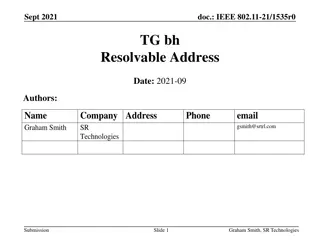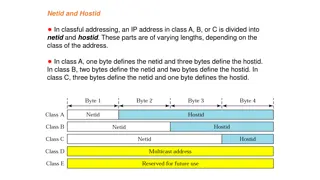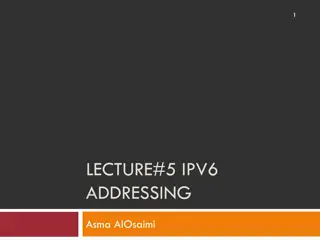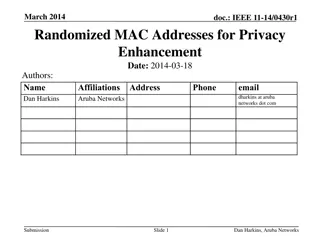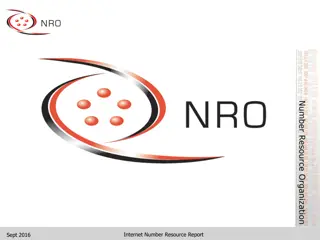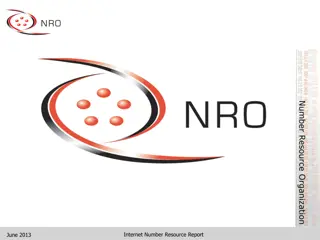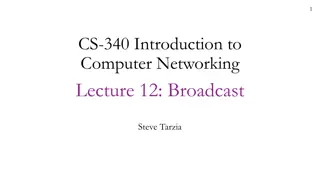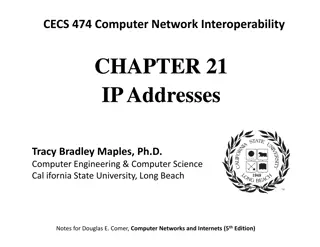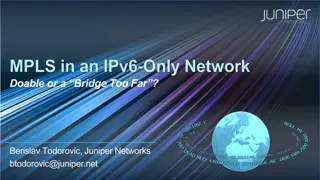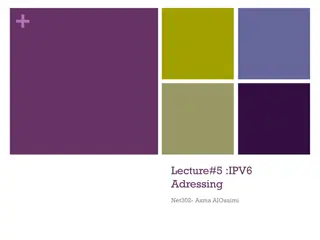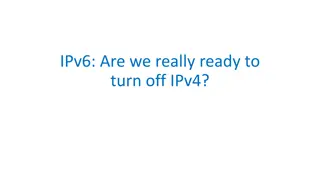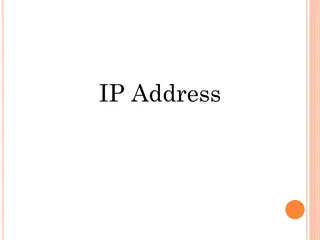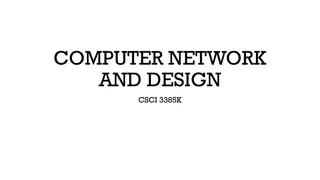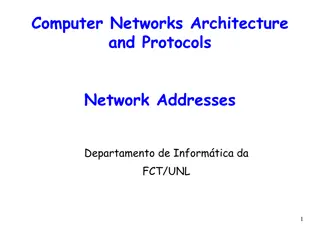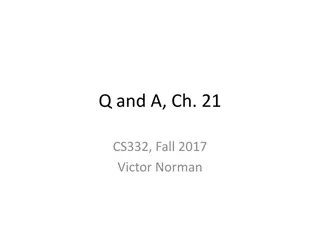Understanding IPv4 Addresses and Classful Addressing in Computer Networks
Explore the basics of IPv4 addresses, address space, hierarchy in addressing, and classful addressing in computer networks. Learn about the unique 32-bit structure of IPv4 addresses, address space calculation, notation methods, and the hierarchical nature of network addressing. Dive into the concept of classful addressing and the division of addresses into class A, B, and C. Gain insight into the classification and allocation of IP addresses in different address classes.
Download Presentation

Please find below an Image/Link to download the presentation.
The content on the website is provided AS IS for your information and personal use only. It may not be sold, licensed, or shared on other websites without obtaining consent from the author. Download presentation by click this link. If you encounter any issues during the download, it is possible that the publisher has removed the file from their server.
E N D
Presentation Transcript
Computer Networks By Sadiq Shah Lecture 12 (Chapter 18) FATA University
IPV4 ADDRESSES An IPv4 address is a 32-bit address that uniquely and universally defines the connection of a host or a router to the Internet. The IP address is the address of the connection, not the host or the router, because if the device is moved to another network, the IP address may be changed. IPv4 addresses are unique in the sense that each address defines one, and only one, connection to the Internet. If a device has two connections to the Internet, via two networks, it has two IPv4 addresses
Address Space An address space is the total number of addresses used by the protocol. If a protocol uses b bits to define an address, the address space is 2b because each bit can have two different values (0 or 1). IPv4 uses 32-bit addresses, which means that the address space is 232 or 4,294,967,296 (more than four billion). Notation There are three common notations to show an IPv4 address: binary notation (base 2), dotted-decimal hexadecimal notation (base 16). notation (base 256), and In binary notation, an IPv4 address is displayed as 32 bits. To make the address more readable, one or more spaces are usually inserted between each octet (8 bits). Each octet is often referred to as a byte.
Hierarchy in Addressing In a postal network, the postal address (mailing address) includes the country, state, city, street, house number, and the recipient A 32-bit IPv4 address is also hierarchical, but divided only into two parts. The first part of the address, called the prefix, defines the network; the second part of the address, called the suffix, defines the node. The prefix length is n bits and the suffix length is (32 n) bits.
Classful Addressing The whole address space was divided into five classes (class A, B, C, D, and E). Although classful addressing belongs to the past, it helps us to understand classless addressing, discussed later IPv4 address is divided into two parts: Network ID Host ID
Class A IP addresses belonging to class A ranges from 1.x.x.x 126.x.x.x IP address belonging to class A are assigned to the networks that contain a large number of hosts. The network ID is 8 bits long. The host ID is 24 bits long.
Class B IP address belonging to class B are assigned to the networks that ranges from medium-sized to large-sized networks. The network ID is 16 bits long. The host ID is 16 bits long. IP addresses belonging to class B ranges from 128.0.x.x 191.255.x.x.
Class C IP address belonging to class C are assigned to small-sized networks. The network ID is 24 bits long. The host ID is 8 bits long. IP addresses belonging to class C ranges from 192.0.0.x 223.255.255.x.
Class D: Multicasting IP address belonging to class D are reserved for multi-casting. The higher order bits of the first octet of IP addresses belonging to class D are always set to 1110. IP addresses belonging to class D ranges from 224.0.0.0 239.255.255.255.
Class E IP addresses belonging to class E are reserved for experimental and research purposes. IP addresses of class E ranges from 240.0.0.0 255.255.255.254
Exercise Find the class of the following classful IP addresses???? a. 130.34.54.12 -------- B b. 200.34.2.1 -----------C c. 245.34.2.8 -------------E Find the class of the following classful IP addresses: a. 01110111 11110011 10000111 11011101 A



